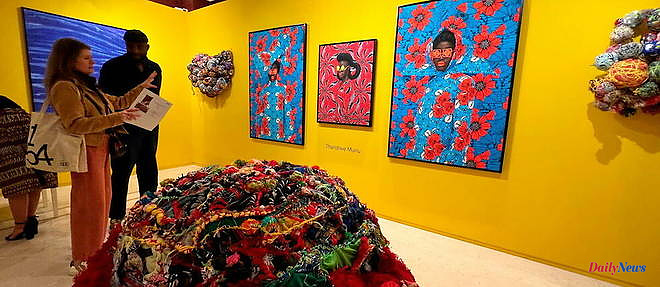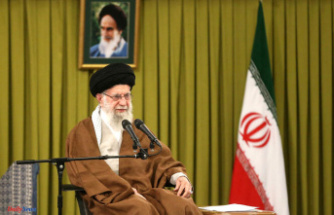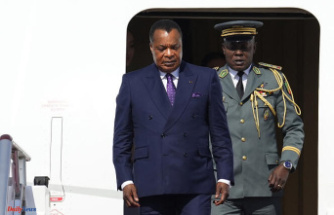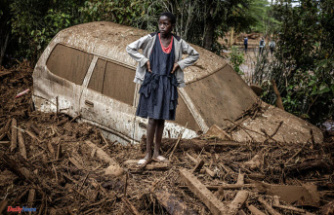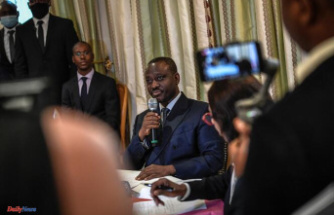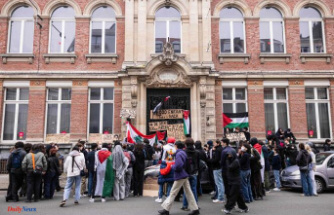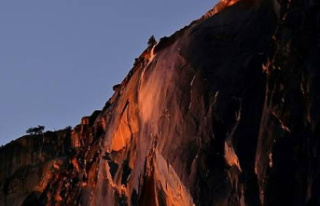In a decade, everything has changed. Galleries and trade fairs showcasing African artists have multiplied. There are now five specialized art fairs: 1-54 in London, New York, Marrakech, Paris, but also AKAA in Paris, FNB Art Joburg in Johannesburg, Art X Lagos and Investec Cape Town Art Fair in Cape Town, in South Africa. Beyond dedicated fairs, African artists are also increasingly finding their place, and successfully, in all international fairs, from Miami to London, from New York to Geneva. What about Paris?
Long lagging behind London and New York, the French capital has become one of the most attractive places in the market for contemporary African art. In recent years, despite the Covid which put life under glass for a while and forced art actors to offer digital editions, the "physical" has regained its letters of nobility. Many new galleries dedicated to African or diaspora artists have opened in physical spaces, others have moved to expand.
Last December, the opening of the youngest, Christophe Person's gallery in the Marais, was a good illustration of this. After setting up the contemporary African art department of the Piasa auction house, then heading the same department at Artcurial, where he remained an external consultant, Christophe Person decided to launch a more personal project. He is not the only one.
The new galleries have the particularity of having quickly taken their marks. Thus Florian Azzopardi, who launched Afikaris in 2018, an online gallery, transformed his apartment into a showroom, before quickly opting for a gallery near the Center Georges Pompidou and moving at the end of 2022 to a space more in keeping with his ambitions close to the Republic. In the same district, gallery 193 (for 193 countries); launched, too, in 2018, moved to a larger space before opening a second place designed as an open residence workshop. To inaugurate him as the first guest artist, the choice fell on the Burkinabé Hyacinthe Ouattara.
Barely out of the Covid, in September 2021, two gallery owners inaugurated a new space in the golden triangle of the 8th arrondissement. On this occasion, Cécile Fakhoury and Mariane Ibrahim honored Ivorian, Ghanaian, Senegalese and Nigerian artists. And they intend to convince both the upscale French and international clientele, who like the district, but also the great collectors, not to mention the heads of European and American institutions and museums passing through Paris. Is it necessary to recall that, in this golden triangle of contemporary art, with Avenue Matignon and Rue Saint-Honoré as markers, one rubs shoulders with institutions such as Emmanuel Perrotin, Gagosian, Lelong, as well as the essential of the sector, the auction houses Artcurial, Christie's and Piasa?
"Today, Paris is living again, and reconnecting with its cultural, artistic and historical splendor of yesteryear. We see an incredible opportunity for the artists we represent to be part of this return of the capital to the international scene, and to claim the unquestionable contribution of artists from the African diaspora on the artistic canons past, present and future”, rejoices Mariane Ibrahim, who, from Chicago where she was present, announced the opening of her Parisian gallery. For Cécile Fakhoury, well anchored in her beautiful 400 m2 gallery located in Abidjan, the opening of the Parisian address follows that of Dakar in 2018. She thus intends to take advantage of her presence in Paris to increase the international visibility of her artists. .
All this takes place in the universe of an art market which is evolving enormously. For César Lévy, founder of the 193 gallery, "the border between the first and the second market is blurring. Thus, the Drouot auction house has launched a platform, like Artsy, an offer intended for galleries and positioned on emerging artists, "he explains, adding that he is starting to be regularly canvassed. “Models and perimeters are exploding and everyone wants to take advantage of digitalization. We are also changing the model with the gallery owner Perrotin, who offers in his galleries in Paris, but also now in Dubai, works from the second market, bought from collectors. Everyone is looking to expand their business,” he continues.
On the other hand, for artists, exposing themselves too quickly on the secondary market can be dangerous, especially if their price drops or if the works do not find buyers. It is known. "The risk is lower for artists who are already recognized, but it's much more complicated for emerging artists," says César Lévy. “Within a gallery, the artist is more protected. The gallery represents him, promotes him at fairs and exhibits him. Auction houses are now doing more and more small exhibitions before more curated sales. However, they always communicate on their sales volume! We work on the long term with our artists, this is not the case with the auction houses”, he adds.
"While we maintain a strong focus on Africa, we are expanding our programming internationally with artists such as the Italian Aron Demesde or the Hungarian Márta Kucsora", specifies Stella Melbye, founder in Hamburg of the gallery Melbye Konan, who managed to get started between two waves of Covid and who moved to invest in even more spacious premises. "It's important that the gallery tries to control the secondary market and gets to know its collectors well," she says, noting that she refuses to "sell online without a call to get to know each other." And to conclude: "It's a good way to avoid art flippers, those buyers who are just interested in immediate resale to pocket a profit. »
In any case, it should be remembered that, while digital technology has taken a large place in the contemporary art market, it is not everything. For Gazelle Guirandou, for example, "it is the meeting that takes precedence, with the artist, of course, but also with the collector". As proof, by taking over the management of the LouiSimone Guirandou gallery, co-founded with her mother, she wished to continue in Abidjan the exhibition work already started by her mother, and this, on artists from all over the world. "I sometimes get criticism that some of the artists I represent aren't African enough," she says with a hint of amazement. "You have to talk about the artists, African maybe, but isn't the important thing that they are good and that they also meet other artists who come from different backgrounds", she insists .
These are all elements that illustrate that the reflection around the works is rightly denser. Thus, to avoid seeing their foals end up too quickly on an auction sale, they have protection clauses signed. These prohibit in principle the buyer from reselling the work within 5 years. This is an important first step, even if, in fact, there are some hiccups. “I heard a Parisian gallery owner very unhappy about the auction, behind his back, of a painting by one of his young proteges. Fortunately, the painting had been sold at a decent price, ”says an attentive observer of the medium. “Gallerists are trying to protect themselves, but the trend was started by big auction houses like Phillips. It's hard to go against it,” acknowledges Charlotte Lidon, co-director of the contemporary African art department at Piasa. “We try to respect and we talk a lot with the galleries and even the artists. We consider that we are part of this ecosystem and are not here to crush people. The end goal is to be part of the creation and to facilitate the movement of transferring works from one hand to another, from one collection to another”, adds Olivia Anani, also co-director of the contemporary African art department. at Piasa.

